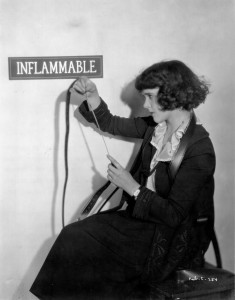See also: “Cutting Women: Margaret Booth and Hollywood’s Pioneering Female Film Editors” by Kristin Hatch
Perhaps because it was considered a purely mechanical and tedious undertaking, requiring only attention to detail, keen eyesight, and nimble hands, film editing in the first decade was often carried out by anonymous, young working-class women. Their duties were considered to be no more creative than cutting and pasting hundreds of feet of negative and positive film, and, as such, cutters and joiners were not mentioned in the trade presses, which the first century of US motion picture history relied upon so exclusively.
As the moving picture became longer, however, working conditions changed. With two and three reels, as the process became more complex and editors’ decisions had a more obvious impact on the cinematic narrative, a handful of women became major editors in their own right. These include Margaret Booth, who became the supervising editor at Metro-Goldwyn-Mayer (1936–1969); Irene Morra (1921–1958) and Viola Lawrence, who became supervising editor (1925–1960) at Columbia Pictures; and Blanche Sewell (1925–1956) at Metro-Goldwyn-Mayer. These women were able to keep their jobs into the era in which Hollywood film production had become almost entirely male.
While women did maintain somewhat of a foothold in screenwriting throughout the first century of US cinema, they were never there in the numbers they had been in the silent era. While Booth, Sewell, Morra, Lawrence, and Anne Bauchens continued working from the silent era into the late 1940s and 1950s, Jane Loring and Rose Smith both worked until the mid-1930s. If we can say one thing about all of the women profiled here, it is that they would become exceptions in a business that, although it did not begin that way, became a male-dominated industry over its first twenty years.

